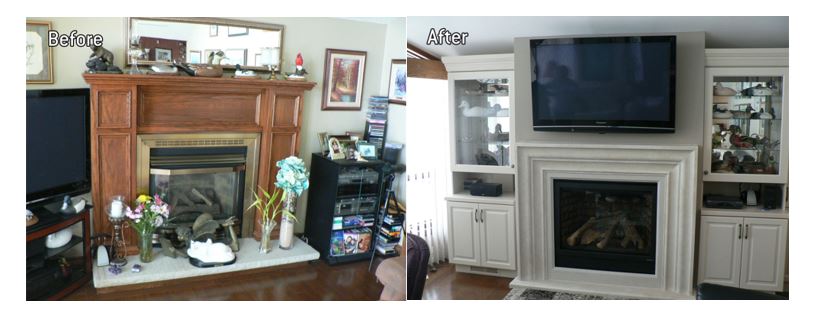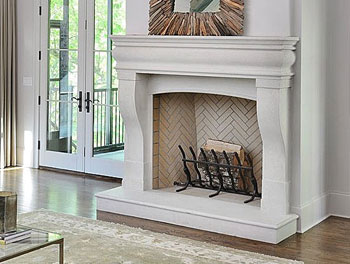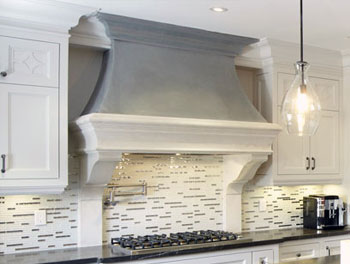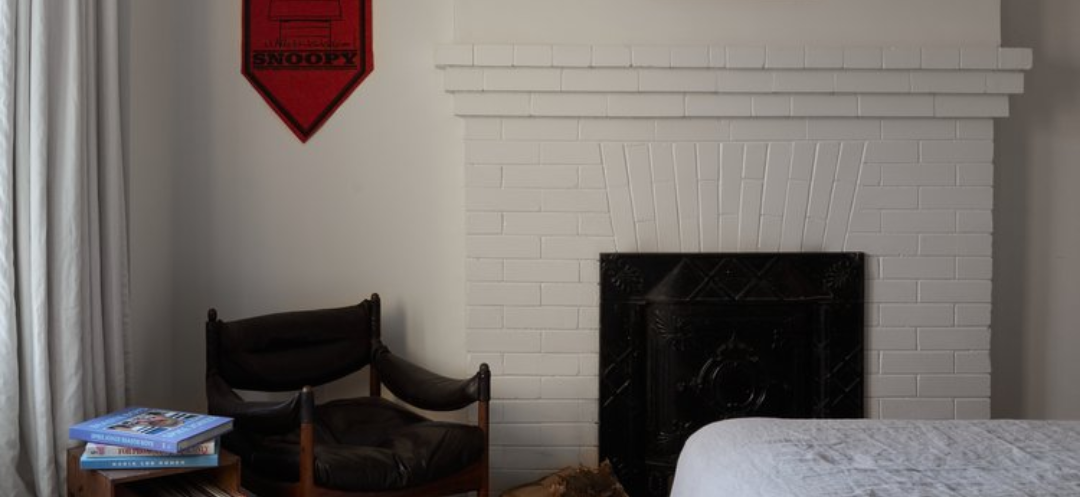

Painted Fireplaces and Microcement: Are They Worth the Risk? A Case for the Stone Mantel Revival
From kitchens to great rooms, hotel lobbies to cozy restaurants, fireplaces are never out of style. They anchor a space, draw the eye, and offer warmth in more ways than one. But their surrounds? Those haven’t always aged as gracefully. What once felt charming can now feel clunky, outdated, or totally out of sync with today’s design direction.
When something in our space feels out of place, it starts to feel in the way. So, we seek resolution. And in this era of minimalism, clean lines, soft neutral palettes, and earthy textures, it’s no surprise that more people especially DIYers are trying to reimagine their fireplaces with simple, surface-level solutions.
Lately, painted brick and micro cement fireplaces have taken over Pinterest boards and design TikTok. Products like Portola Paint’s Roman Clay or Benjamin Moore’s historic off-whites make it easy to fall in love with the idea of a “quick” fireplace glow-up. But like any project it is important to research and learn the potential long-term risks.
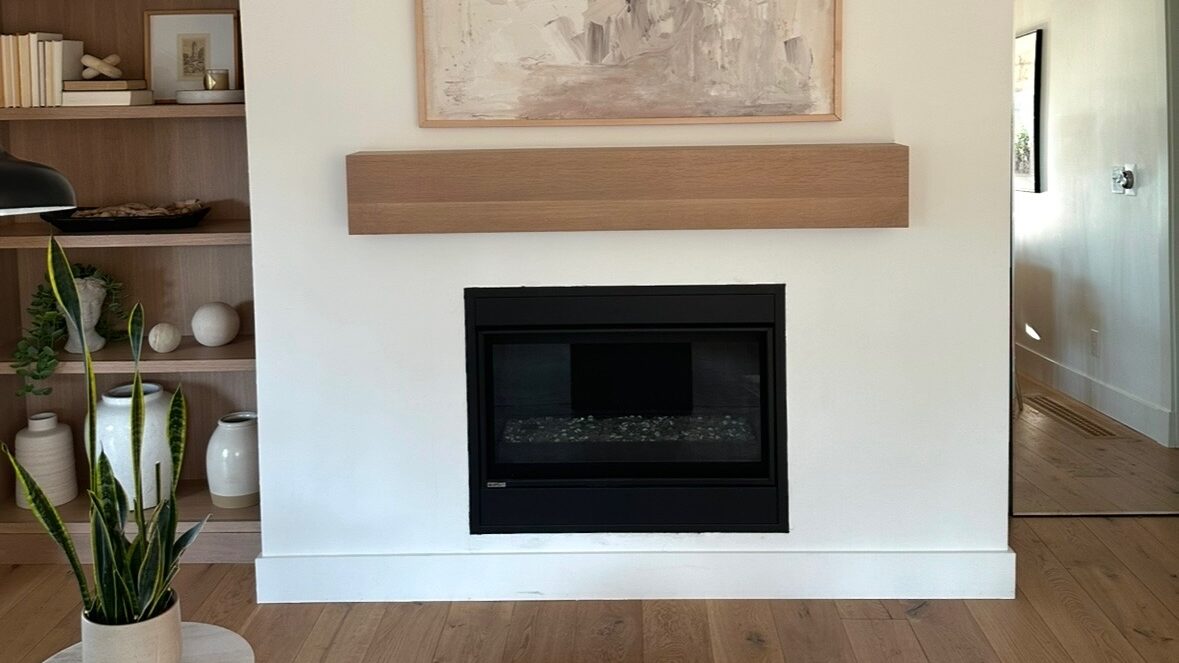
The Problem With Painted Fireplaces
It’s tempting to grab a brush and give your old brick a crisp coat of white or charcoal. Instant transformation, right? But painting over fireplace brick, especially if it’s still functional isn’t always as harmless as it seems.
Here’s why:
- Brick needs to breathe. It’s porous by nature, releasing moisture over time. Paint traps that moisture, which leads to flaking, peeling, and even damage. As it chips away, you’re left with uneven patches and constant touch-ups what some might call the dreaded Landlord Special.
- Once it’s painted, it’s nearly permanent. Removing paint from brick isn’t a weekend DIY. Sandblasting might strip it, but it also strips away the brick’s outer layer, making it weaker, more porous, and prone to damage. Chemical paint removers are an option, but they’re harsh, smelly, and not always effective, especially on older or oil-based paints.
- It could be dangerous. Regular interior paint isn’t made for high-heat areas. If used too close to a heat emitting firebox, it can emit harmful fumes or even become a fire hazard over time.
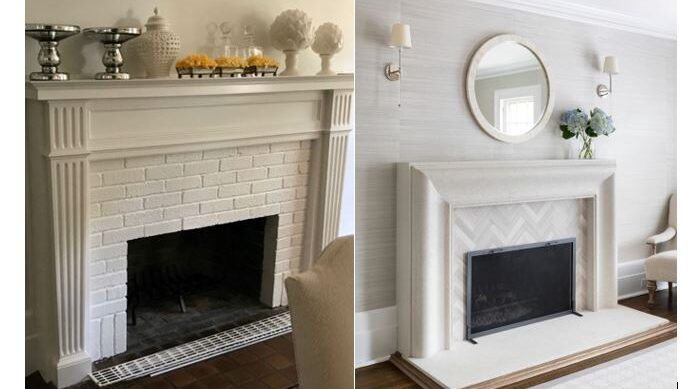
Microcement: Sleek, Stylish… and Maybe Not Built to Last?
Microcement is another trend grabbing attention for its ultra-smooth, seamless look and soft cement tones. It is beautiful no doubt. But much like heavily textured “crow’s feet” ceilings, it has its drawbacks if you aren’t careful to use the right materials.
- Dust magnet. Depending on how it’s applied, microcement can have a gritty texture that attracts and holds dust making it harder to clean than it looks.
- Not as durable as it seems. If not sealed properly, microcement surfaces stain, scuff, and water-mark easily. And it’s not naturally fire-resistant, so extra steps need to be taken to make it safe for fireplace use.
- Trendy today, tired tomorrow. Like so many surface treatments, microcement may not age well. What feels fresh and editorial now could feel dated in just a few short years.
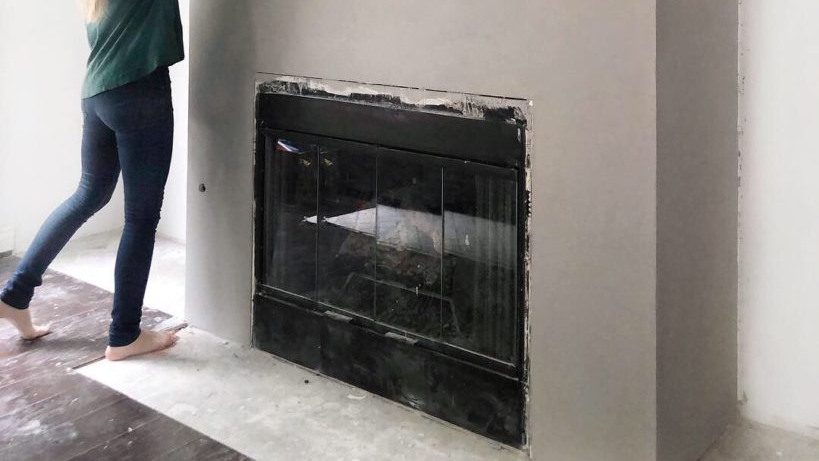
Goodbye Orange-Waxed Wood, Hello Sculptural Stone
We’re (finally) saying goodbye to the honey-stained, yellowy wood surrounds of the early 2000s. And while chasing what’s “hot” on social media can be fun, the best design choices usually come down to what’s timeless.
Stone mantels especially those with clean, contemporary lines offer a grounded, elegant look that’s quietly confident. It doesn’t beg for attention. It enhances the space and brings a sense of permanence.
So if you’re staring at a painted brick fireplace wondering what’s next or you’re tempted by microcement but unsure of its longevity, remember: it’s okay to want something that looks beautiful and lasts.
Stone delivers both.
